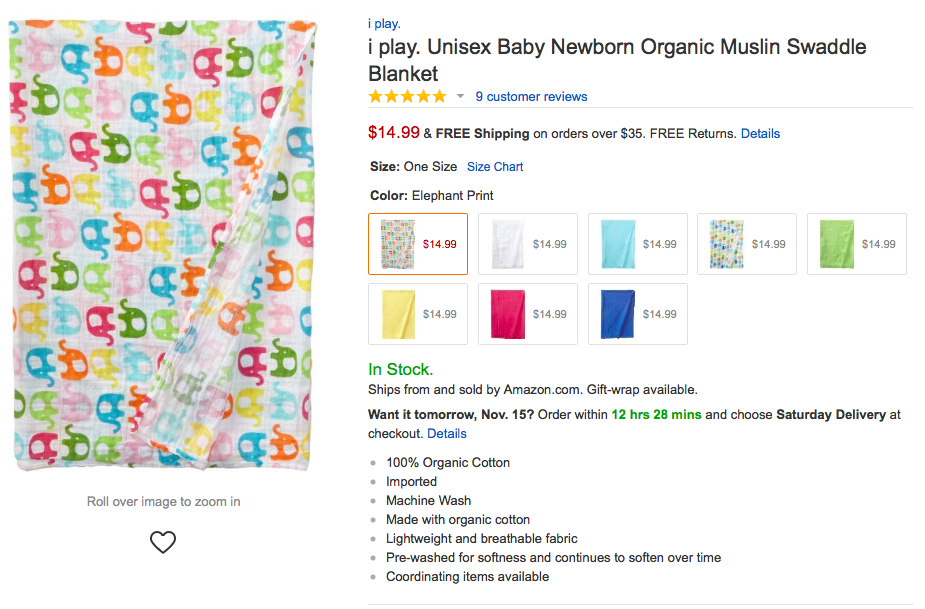In “SEO: The Case for Optimizing Amazon,” my article last week, I reviewed the growing importance of optimizing products for Amazon’s massive internal search engine. In this article, I’ll describe steps to accomplish that goal.
Organic search performance on Amazon depends on a mixture of successful sales and keyword relevance.
Amazon’s internal search results correlate strongly with conversion rates. When you convert more page views to sales on Amazon, your page will rank higher in Amazon search to be seen by more customers. But to rank for Amazon searches — so that you can convert strongly to enable stronger Amazon search rankings — you need to be visible in Amazon’s search results in the first place.
Optimizing Product Data
Start with your data. If you’re using a data feed to get the product information into Amazon, make sure, above all, that the feed is accurate. The right data elements must flow into the correct fields in Amazon’s interface. Without this elementary level of optimization, your products will fail to be placed in Amazon’s navigational system of categories and filters as well as in Amazon’s filtered search results.
The data also needs to be as complete as possible, in every field that’s relevant.
For example, if you sell blue muslin baby blankets with a pattern of little cars on them, the products will probably be categorized under “blankets and swaddling” in the “baby products” category. But don’t stop there. The data elements “cotton,” “print,” and “boy” should be entered into the appropriate “material,” “pattern,” and “gender” fields.
Naturally, the fields available for each category will be different. Make the most of Amazon’s rich structured data schema to target more customers looking for the specific attributes your products offer.
Optimizing Product Content
Next comes the keyword research and content optimization aspect that is foundational to all search marketing, regardless of the search engine. Amazon doesn’t publish keyword data for its network the way that Google does, so there’s no true source of keyword data for Amazon search. Use the Google Keyword Tool for keyword research as a proxy for Amazon search data, and learn from the performance of your products which keywords resonate more strongly with the Amazon audience.
The prominent areas to optimize in Amazon’s product page are the title, bullet points, and product description.
The title is the name of the product, with additional relevant product details added. Creating a strong title for Amazon search that doesn’t read like spam is an art.
For example, consider this product name for a swaddling blanket for babies: “Brights Organic Muslin Swaddle Blanket.” Keyword research shows that the words “cotton” and “baby” are both very frequently searched for in regards to swaddling blankets. Adding the words to the title could yield something like this: “Brights Organic Cotton Muslin Baby Swaddle Blanket.”

Amazon’s search results for “organic muslin swaddle blanket”.
The words and order of the elements in the title should be based on a combination of maintaining the integrity of your product name and the keyword data.
The description fields are also important to SEO — for Amazon search and other search engines — and should likewise use the keywords identified in your keyword research. The bullet points below the product images are called the “product description” in Amazon’s interface, as opposed to the free-form text field below that which is called “description.”
The product description bullets should be short phrases describing the product’s features and attributes. In addition to the features you would normally use to describe your product internally, look to your keyword research to identify ways searchers describe products like yours.
For example, the bullets in the image below contain no mention of the word “baby,” likely because in the seller’s mind it’s obvious that the product is for babies. There is no other reason to buy a swaddling blanket. Searchers, however, are looking for “baby blankets,” “organic baby blankets,” and “muslin baby blankets” by the thousands. Use the bullets to call out your product’s relevance in the phrases that your customers use.


The upper portion of Amazon’s product detail page shows the product’s name, image, and descriptive bullet points — all important for content optimization.
The free-form description field — located on the lower portion of the page — should be used to expand on the product’s features. Do not just restate the same phrases used in the bulleted product description. It’s a waste of an opportunity to market to your customers, an annoyance to your customers, and a missed opportunity to influence SEO.


The free-form description field should be used to expand on the product’s features.
The example above does just that — reiterates the bullets using complete sentences. The only new elements are focused on their chemical-free production process. This is good supporting information and absolutely should be included. But the new elements need to lengthen the content to add more product information and add in phrases from the keyword research.
I’ve edited the underlined words in the product description below to incorporate keyword phrases and to flow more smoothly.
The i play. Organic Muslin Swaddle Blanket is made with 100% organic cotton muslin. The cotton in our baby swaddling blankets was grown without the use of toxins, synthetic fertilizers or pesticides and decorated with low impact, azo-free dyes. Our muslin blanket material is lightweight and breathable for the safety and comfort of your baby, and has been pre-washed for softness. With use, this baby blanket will continue to soften over time. Long after she’s through with swaddling, your baby can use this versatile blanket in the crib, as a beach cover or a security blanket, or maybe even to swaddle her own stuffed animals. All i play. organic muslin and organic cotton items coordinate so your baby’s onesie will match her swaddle blanket.
By focusing on the content elements of the product page, we’re focusing on getting more customers to the product page. Once on the page, other factors like price, quality and number of images and videos, quality of reviews, and others will influence their decision to purchase. Conversion rate will, in turn, influence Amazon’s likelihood to show the product in its search results.







